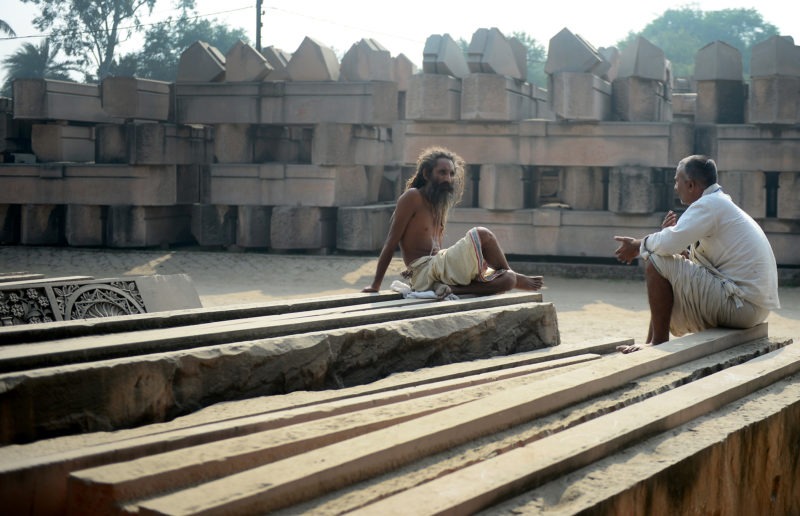India’s epic legal battle over religious site
The tussle centres on a small area of land in Ayodhya, a city in the northern Indian state of Uttar Pradesh (SANJAY KANOJIA)
New Delhi (AFP) – The end, perhaps, is now nigh in the epic legal dispute over a religious site that has sparked thousands of deaths, with India’s top court wrapping up hearings on Wednesday.
Judges are now expected to rule on the ownership of the area claimed by both Hindus and Muslims in Ayodhya in northern India by November 17.
From 16th-century emperors to deadly riots, via a nonagenarian lawyer representing an infant deity, here is the background to the labyrinthine legal saga dating back more than a century.
– Birthplace and Babur –
The tussle centres on an area of land measuring just 2.77 acres (1.1 hectares) in Ayodhya, a small city in the northern state of Uttar Pradesh.
India’s majority Hindus believe that Lord Ram, one of their most important deities, was born there.
They also believe the Muslim conqueror Babur, the first Mughal emperor, razed the temple in the 1500s to make way for a mosque, the Babri Masjid.
– Flashpoint –
Under British colonial rule, a fence was erected to separate places of worship so Muslims could worship in an inner court and Hindus the outer.
The first legal dispute emerged in 1885 with a plea seeking permission to build a canopy outside the mosque premises for Hindu devotees.
But in 1949, two years after independence, idols of Lord Ram appeared inside the mosque which allegedly were placed there in a staged “miracle”.
Muslims objected and both parties went to court, kicking off a tortuous legal battle over the right to worship at the site, which continues to this day.
– Destruction –
In 1984, Hindus formed a committee to “liberate” Ram’s birthplace and build a temple, led by L. K. Advani, a senior figure in the Bharatiya Janata Party (BJP), now headed by Prime Minister Narendra Modi.
On December 6, 1992 a Hindu mob estimated to number 200,000 — aiming to symbolically lay the first stone of a new temple — reduced the mosque to ruins.
This triggered some of the worst religious riots since India’s bloody partition in 1947, leaving around 2,000 people dead, mainly Muslims.
In 2002, 59 Hindu activists died in a fire on a train returning from Ayodhya, sparking riots in Gujarat state — when Modi was state premier — that saw upwards of 1,000 people perish, most of them Muslims.
– Lion’s share –
An important ruling came in 2010 when a High Court ruled that Muslims and Hindus should split the site — albeit unevenly, with Hindus granted the lion’s share.
But this left no one happy. Both Hindu and Muslim groups appealed and the Supreme Court in 2011 stayed the lower court’s ruling, leaving the issue unresolved.
In March this year, the Supreme Court appointed a three-man panel including a famous guru to resolve the prickly issue through mediation, but this too failed.
– Representing Ram –
The hearings ended in drama on Wednesday as Rajeev Dhawan, a lawyer for one of the Muslim parties in the case, tore up a map purportedly showing the temple existed in ancient India.
As a Hindu lawyer appearing for a Muslim party, Dhawan faced abuse and death threats. He has been likened to Atticus Finch, the hero in Harper Lee’s “To Kill a Mockingbird”.
Another lawyer, former attorney general K. Parasaran, represents the infant Lord Ram.
In his mid-90s, Parasaran declined the court’s offer to make his case sitting down and reportedly spent two days on his feet explaining why the deity could be a “juristic person”.
Disclaimer: Validity of the above story is for 7 Days from original date of publishing. Source: AFP.


